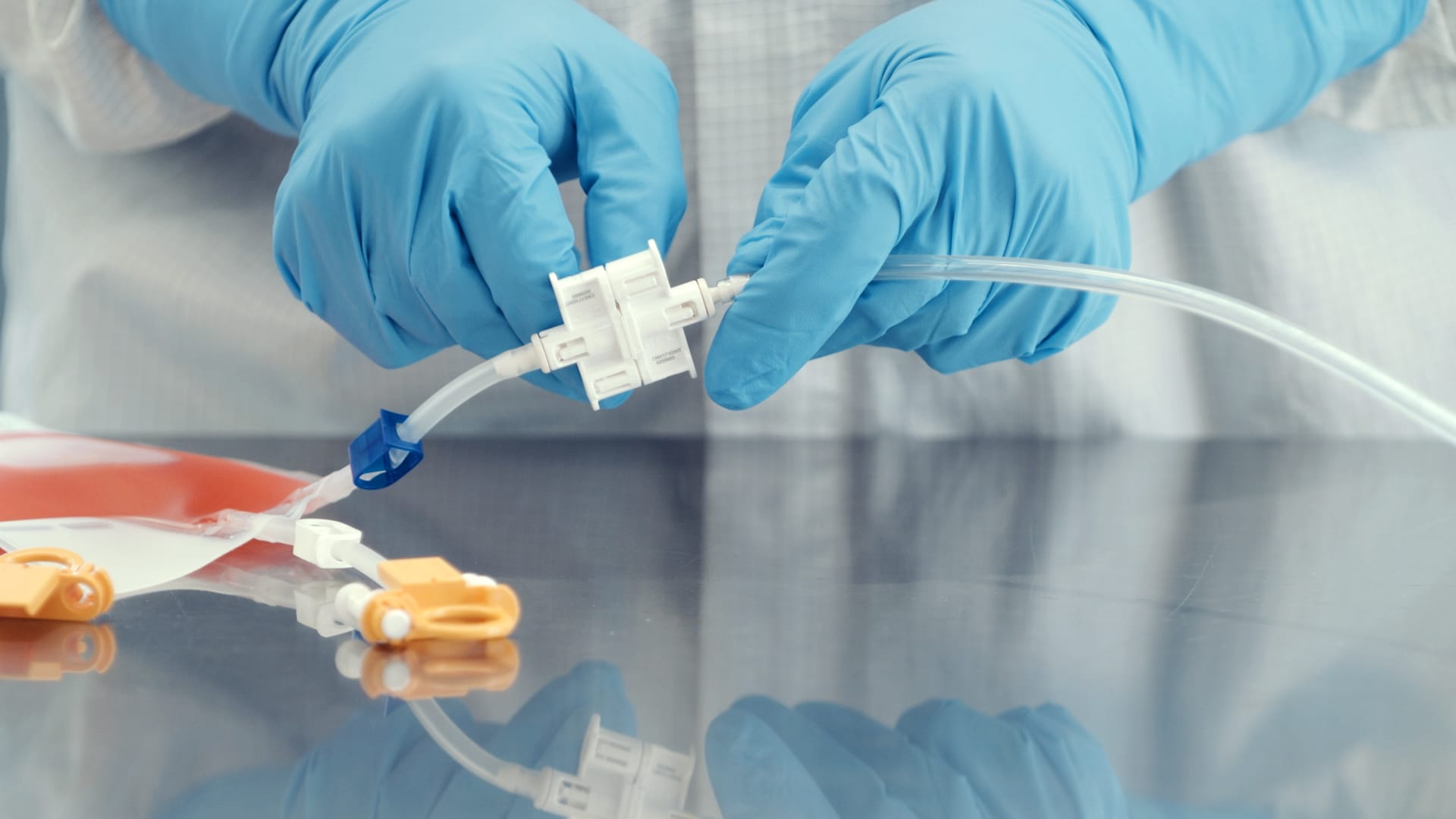Dover shares fell Thursday despite reporting better-than-expected second quarter results and raising its full-year outlook. We think the market is misjudging this one. Revenue in the second quarter increased 5% year over year to $2.05 billion, beating the $2.04 billion consensus, according to estimates compiled by LSEG. Adjusted earnings per share (EPS) in the three months ended June 30 totaled $2.44, outpacing expectations of $2.39 per share, LSEG data showed. DOV YTD bar Dover’s year-to-date stock performance. Bottom line We’re surprised by this reaction to Dover’s earnings. Not only did the company beat on the top and bottom line, it reported a record adjusted segment EBITDA margin; an acceleration in bookings that provides visibility into the future; and outlined several growth and productivity investments to support long term growth. What’s not to like? (EDITDA, a measure of operating profitability, is short for earnings before interest, taxes, depreciation and amortization.) Dover Why we own it : We own Dover as an industrial turnaround story with exposure to mega-themes, most notably the data center buildout to support artificial intelligence computing. The company’s key products for data centers are thermal connectors and heat exchangers. Dover’s business serving the biopharma industry is another attractive area. Dover’s active portfolio management and commitment to capital returns sweeten the investment case. Competitors : Ingersoll Rand , IDEX Corp ., Snap-On , Veralto , among others Most recent buy: July 14, 2025 Initiated : May 28, 2024 Sure, Dover may not be growing revenue as fast as other industrials like an Eaton or GE Vernova. Those fellow Club stocks are more thematic plays, levered to the proliferation of data centers around the world. Still, Dover isn’t getting enough credit for how it has reshaped its portfolio. We recognize all those portfolio actions — the selling of slower-growing, lower margin businesses and high-grading with accretive deals — creates some moving parts. This makes the story confusing and requires patience. However, through these portfolio actions and leaning into fast-growing businesses, revenue growth should accelerate in the second half of the year at a higher margin rate than in years past. We think Thursday’s sell-off should be bought. We are reiterating our buy-equivalent 1 rating and keeping our price target at $210. Quarterly commentary Total revenue increased 5% year over year, driven by a 1% increase in organic sales, a 3% benefit from acquisitions, and a 1% tailwind from foreign exchange. Bookings are the best predictor of future growth. It’s defined as total orders received from customers in the reported period. That’s why we were pleased to see bookings increase 7% year over year and up sequentially, indicating there’s good momentum in the business. Although Dover is only a few weeks into the third quarter, management said on the earnings call that orders are “tracking really well,” another good sign. In addition, Dover’s year-to-date book to bill ratio is above 1 across all five segments, with the company pointing out strength in its highest margin and secular growth markets. This should set up the company well into the second half of this year. Book-to-bill measures the amount of orders received versus orders fulfilled over a given period, so above 1 is desired. Dover’s secular growth business platforms are clean energy components, precision components, single-use biopharma, inputs into liquid cooling applications of data center, and CO2 refrigeration systems. These markets represent 20% of Dover’s portfolio, are higher margin, and are expected to grow at a double digit clip. What really shined in this quarter was Dover’s margins. On an adjusted EBITDA basis, all five segments improved margins over the same quarter last year. Now, here’s a look at how each business segment did in the quarter (a basis point is equal to 0.01 percentage point): Dover’s engineered products segment— a diverse collection of businesses serving end markets such as vehicle repair, aerospace and defense, and industrial automation — saw a 5% decline in organic sales but a 140 basis point improvement to adjusted EBITDA margins. Revenue fell due to lower volume in vehicle services, but that was partially offset by growth in aerospace and defense. Despite the lower revenue, margins increase year over year thanks to cost actions, execution and improved mix of product sales. Clean energy and fueling segment — consisting of products used in transporting and dispensing various fuels including gasoline and compressed natural gas, among others — delivered 8% organic revenue growth on an annual basis and margins expanded 80 basis points. The organic revenue growth was driven by strong shipments in clean energy components, fluid transport, and North America retail fueling. Margins improved thanks to a favorable mix of product sales, productivity and restructuring actions. Imaging and identification — where we find precision marking and coding, product traceability, brand protection and digital textile printing equipment, along with related consumables, software and services — saw flat organic revenue and a 30 basis point improvement in margins. The higher sales were driven by growth in core marking and coding, while textile shipments fell. The margin gains were driven by productivity and ongoing structural cost controls. Pumps and process solutions — home to Dover’s biopharma components business and its thermal connectors used to liquid cool AI servers — recorded organic revenue growth of 4%. The revenue increase was driven by strong shipments and order rates of those biopharma components and thermal connectors, but precision components and industrial pumps were also positive. Polymer processing shipments declined, weighing on revenue. Due to the volume strength in high margin business lines like biopharma and thermal connectors, margins increased 180 basis points. Climate and sustainability technologies — which provides energy-efficient equipment, components and parts for the commercial refrigeration, heating and cooling and canmaking equipment end-markets — saw organic revenue decline 6% but margins improve 60 basis points. Dragging the segment lower were volume declines in food retail door cases and services, but CO2 systems, beverage canmaking, and global heat exchanges were a bright spot. Margins increased thanks to productivity actions and higher mix of U.S. CO2 systems. Dover’s clean balance sheet and large cash pile provides it with plenty of opportunities to invest inorganically through merger and acquisitions to drive growth and improve the makeup of the company. And it’s doing plenty of that, with one highlight in the quarter being the acquisition of Sikora, which is a high-single-digit growing, 30% margin business that provides solutions for measurement, inspection, and control technologies for things like wires and cables, as well as plastics applications. But management also believes there are significant organic investments to make. For example, the ninth slide of company’s earnings presentation highlights how Dover is accelerating growth and productivity investments across its five segments to drive long term growth. Some of these are growth capacity expansions to support its fasting growing businesses. But the company is also making investments in productivity and automation to improve margins, as well as optimizing its supply chain and reshoring, likely to reduce the impact of tariffs. Management plans to take more about the cost savings from these actions with its third quarter earnings. Guidance Dover raised its full-year outlook on both revenue growth and adjusted earnings per share. It now expects revenue to increase between 4% to 6%, an improvement from its prior expectation of 2% to 4% growth. On earnings, the company now sees adjusted earnings per share in the range of $9.35 to $9.55, representing about 14% growth year over year at the midpoint. That’s a solid increase from the range of $9.20 to $9.40 that it provided last quarter and a five-cent-per-share improvement from the $9.30 to $9.50 outlook it provided at the start of the year. Recall, Dover proactively lowered its full-year forecast by 10 cents last quarter not because of “data” or from something they were hearing from customers. It was hedge against weak economic sentiment due to tariffs. (Jim Cramer’s Charitable Trust is long DOV. See here for a full list of the stocks.) As a subscriber to the CNBC Investing Club with Jim Cramer, you will receive a trade alert before Jim makes a trade. Jim waits 45 minutes after sending a trade alert before buying or selling a stock in his charitable trust’s portfolio. If Jim has talked about a stock on CNBC TV, he waits 72 hours after issuing the trade alert before executing the trade. THE ABOVE INVESTING CLUB INFORMATION IS SUBJECT TO OUR TERMS AND CONDITIONS AND PRIVACY POLICY , TOGETHER WITH OUR DISCLAIMER . NO FIDUCIARY OBLIGATION OR DUTY EXISTS, OR IS CREATED, BY VIRTUE OF YOUR RECEIPT OF ANY INFORMATION PROVIDED IN CONNECTION WITH THE INVESTING CLUB. NO SPECIFIC OUTCOME OR PROFIT IS GUARANTEED.





